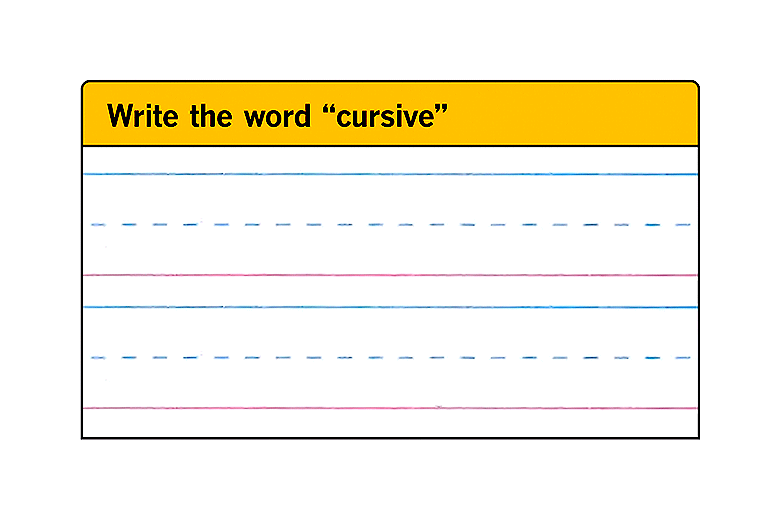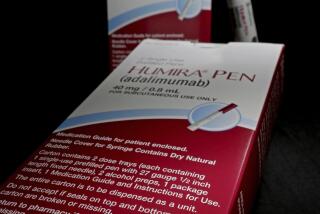Scribes are doctors’ tech support
Melissa Genove has dreamed of becoming a physician since childhood. To help her prepare, she spends as many as 35 hours each week shadowing emergency room doctors at Loma Linda University Medical Center. The 23-year-old listens intently as they examine patients, records their treatment plans in a laptop computer, and follows up on prescriptions, lab tests, consultations with specialists and anything else the doctors order.
Genove is not an intern, or even a medical student. She is the chief medical scribe in the hospital’s emergency department — and one of several thousand young people pioneering a new healthcare field.
Scribes are filling a necessary niche as doctors make the wrenching transition from old-fashioned paper charts to 21st century electronic medical records. The computerized system is supposed to make doctors more efficient and ensure better care for patients. Congress has such faith in the value of electronic medical records that it provided as much as $27 billion over 10 years to encourage doctors to use them, and the Centers for Medicare and Medicaid Services will penalize those who don’t by cutting their reimbursement rates as much as 5%.
But while the conversion is underway, doctors estimate that their productivity plummets by about 30% as they learn to cope with a complicated new system. That’s where scribes come in.
Like Genove, they are typically young, tech-savvy and undaunted by computers. They are willing to work for $8 to $10 an hour with no benefits. Most do the job part-time as college students and plan to go on to full-time careers in medicine or nursing. They say the experience gives them a valuable head start.
“I’ve seen hundreds of chest pain and abdominal pain patients, and I already know the things doctors think about,” said Genove, who is working on a master’s degree in public health at UCLA and plans to start medical school next fall. “It’s difficult but exciting. This is exactly what you want to get into as a pre-med student.”
Doctors have embraced the scribes as well.
“The physicians were spending too much time documenting and not enough time with the patient,” said Dr. Robert Steele, chief of Loma Linda’s emergency department, which began using scribes in November. “The solution was to take the doctors off the computer, put them at the bedside, and let the scribe do the transcription. It’s been a huge success. The physicians love it.”
A few hospital emergency departments have been using scribes since the mid-1990s, and the practice began to spread in the last few years. Scribes are still so new that officials at the American College of Emergency Physicians weren’t familiar with them.
Leaders of the three biggest companies providing scribes estimate that about 200 emergency departments in community hospitals and academic medical centers currently use them. More scribes are on the way. Ronald Reagan UCLA Medical Center, Emory University Hospital in Atlanta and Beth Israel Medical Center in New York City said they are exploring the idea. Physicians in other specialties, including urology and family practice, also are starting to adopt scribes.
Still, some physicians question whether college students are equipped to handle the complicated task of charting patients after only two to four months of training. Others wonder why it’s necessary to hire additional staff to fill out computerized records that were supposed to be simpler and more efficient than paper.
“It will be interesting to watch whether the need for scribes goes away as the next generation of physicians who grew up with computers and electronic medical records comes in,” said Dr. Ann O’Malley, a senior researcher at the Center for Studying Health System Change in Washington, D.C.
Dr. Michael Murphy, an emergency physician who started Lancaster-based ScribeAmerica in 2003, said his company has grown from 32 clients last year to 51 now. It’s currently setting up seven programs around the country. The company’s growth is limited by the time it takes to recruit and train high-quality scribes. Even with high demand, there’s no way to cut corners.
“If scribes write something down inaccurately, lives are affected,” he said.
Dr. David Strumpf, chief executive of Emergency Medicine Scribe Systems in Santa Barbara, said his company prefers to take on clients located near a four-year college so he can hire bright, ambitious and highly literate pre-med and nursing students. But it’s challenging to learn all the medical terminology and coding procedures, and 20% to 40% of trainees drop out.
“It’s an incredible experience for the kids,” said Strumpf, the emergency department chief at Santa Barbara Cottage Hospital who started the company with his medical colleagues four years ago. “They see everything you do, they learn the whole thought process right on the front line. It’s the best exposure to medicine you could possibly get. When I was a pre-med student I would have done this for free.”
Emergency departments have led the way in adopting scribes because they have been hardest hit by the twin pressures of serving more patients while adopting electronic medical records.
At Loma Linda, Steele said doctors used to spend two minutes with a patient, then take four minutes typing the information into a computer. Now the doctor talks to the patient with the scribe present and summarizes the encounter to the scribe in 30 seconds. While the scribe spends three minutes entering the information into an ever-present laptop, the doctor can spend extra time with the patient.
Afterward, the doctor checks the accuracy of the scribe’s chart, makes any necessary additions or corrections, and signs off. Although novice scribes sometimes need the doctor’s help in understanding terminology, those with several months’ experience usually are spot-on, Steele said.
The system also makes it easier for doctors to bill for all the services they provided. Between seeing more patients and optimizing billing, physicians can boost their revenues by $50 to $60 an hour using scribes, whose services typically cost $20 to $26 an hour, said Alex Geesbreght, president of PhysAssist Scribes in Fort Worth.
Murphy of ScribeAmerica estimates that doctors can see eight additional patients over a 10-hour shift, hiking Medicare revenues alone by $91 an hour.
The companies that develop and sell electronic medical records systems are “in total denial” about how complicated they are for doctors to use, Strumpf said. “They know these systems need scribes,” he said. “They work with us to train our scribes on their systems, but they don’t want to be public about it.”
Calls and e-mails to two major suppliers, Epic Systems Corp. of Verona, Wis., and GE Centricity of Burlington, Vt., were not returned.
Even if electronic record systems improve and doctors get better at using them, scribes may be here to stay.
At the University of Virginia Medical Center in Charlottesville, Va., emergency room physicians can complete electronic charts just as fast as scribes, most of whom are pre-med students at UVA. But doctors would rebel if the scribes disappeared, said Dr. Robert Reiser, medical director of the scribe program, which the university runs itself.
“You can be the doctor you thought you’d be when you were in medical school — you just go and see the patient … without all the fuss and drudgery of charting,” Reiser said. “The scribe program is a staff satisfier. I couldn’t dismantle it.”
health@latimes.com






